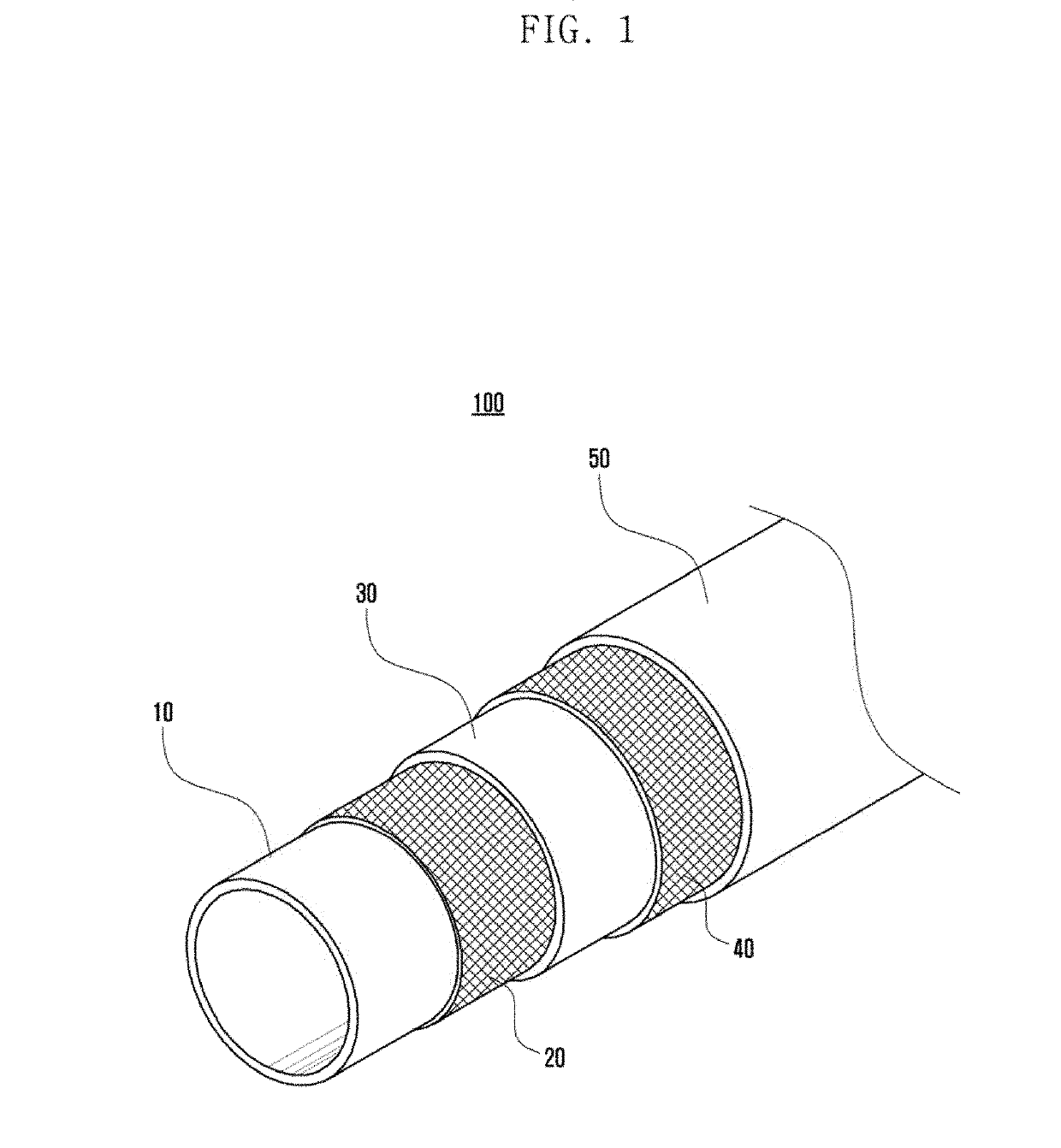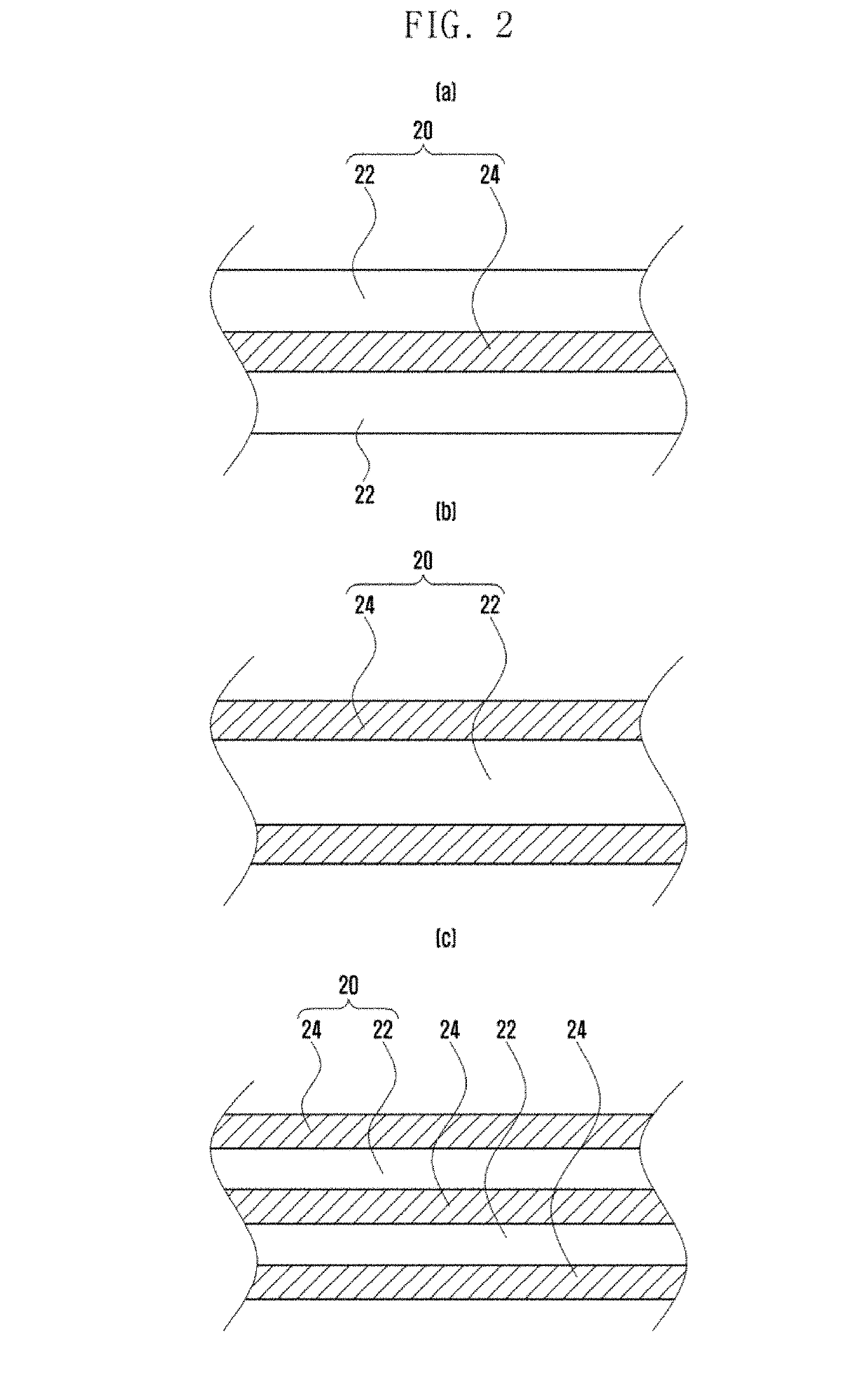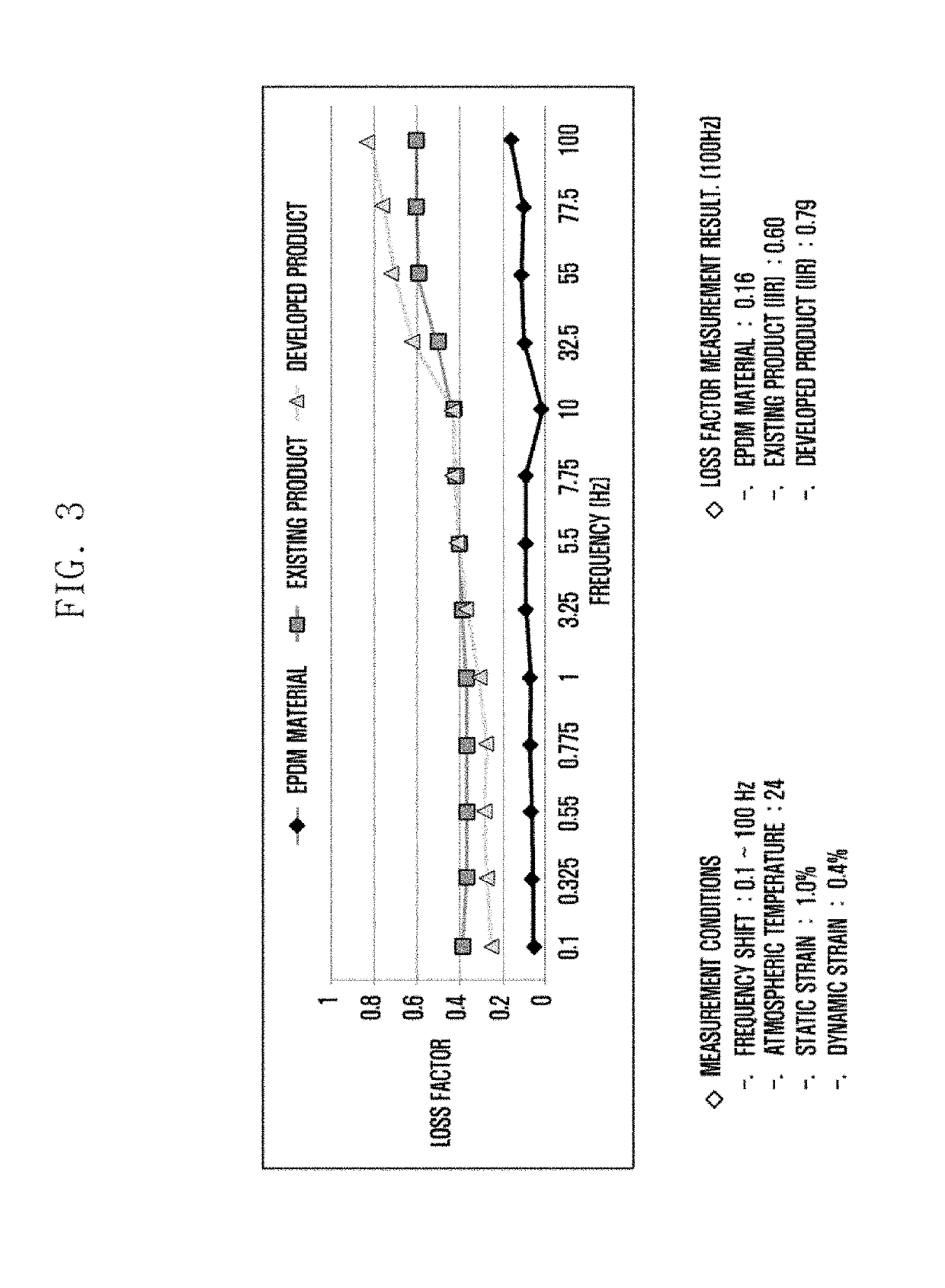Brake hose
a technology of brake hose and fiber, which is applied in the direction of pipes, braking components, synthetic resin layered products, etc., can solve the problems of deterioration of the expansion resistance of the brake hose, deformation of the braking performance, and failure to show satisfactory performance in terms of expansion resistance and solution resistance, etc., to achieve excellent expansion resistance, fatigue resistance, and corrosion resistance. excellent
- Summary
- Abstract
- Description
- Claims
- Application Information
AI Technical Summary
Benefits of technology
Problems solved by technology
Method used
Image
Examples
Embodiment Construction
[0035]Hereinafter, preferable embodiments will be described with reference to the accompanying drawings. It should be understood that the same reference numbers are used throughout the drawings to refer to the same parts. Detailed description of well-known functions and structures incorporated herein may be omitted to avoid obscuring the subject matter of the disclosure.
[0036]FIG. 1 shows an embodiment of a brake hose according to the disclosure.
[0037]As shown in the figure, a brake hose 100 according to the disclosure includes: a tube-shaped inner rubber layer 10 filled with a brake fluid; and a first reinforcing fiber layer 20, an intermediate layer 30, a second reinforcing fiber layer 40, and an outer rubber layer 50, which sequentially surround an outer circumferential surface of the inner rubber layer 10.
[0038]A polyethylene-2,6-naphthalate fiber (hereinafter, referred to as PET) may be used as a reinforcing fiber material constituting the first reinforcing fiber layer 20 accor...
PUM
| Property | Measurement | Unit |
|---|---|---|
| size | aaaaa | aaaaa |
| size | aaaaa | aaaaa |
| vibration insulating | aaaaa | aaaaa |
Abstract
Description
Claims
Application Information
 Login to View More
Login to View More - R&D
- Intellectual Property
- Life Sciences
- Materials
- Tech Scout
- Unparalleled Data Quality
- Higher Quality Content
- 60% Fewer Hallucinations
Browse by: Latest US Patents, China's latest patents, Technical Efficacy Thesaurus, Application Domain, Technology Topic, Popular Technical Reports.
© 2025 PatSnap. All rights reserved.Legal|Privacy policy|Modern Slavery Act Transparency Statement|Sitemap|About US| Contact US: help@patsnap.com



